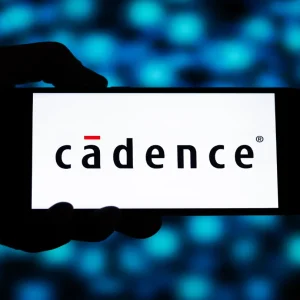
Your businesses could, if it’s involved in software development, be benefitting significantly from the government’s long-established incentives for research and development (R&D) tax credits, writes Tom Heslin of R&D tax credit consultancy ForrestBrown
On average, an R&D tax credit claim is worth £53,876 to SMEs and £272,881 for large companies. The positive impact felt by a business claiming R&D tax credits is usually profound and transformative.
The R&D tax incentive for SMEs is worth up to 33p for every £1 spent on qualifying innovation. If for example your business is investing £500,000 in software R&D each year, you could benefit from an R&D tax credit worth up to £166,750. For many of our clients, their claim is worth much more.
However, this valuable government incentive is still under-used by businesses who carry out software development. Just 38,940 companies made an R&D tax credit claim in 2018, which equates to just 16 percent of all businesses with more than nine employees. Clearly not all these remaining businesses would be eligible, but at least some of them will be.
And the opportunity to claim R&D tax credits for software development has never been clearer.
 Take note of new guidance
Take note of new guidance
Recently, in October 2018, HMRC released new guidance to clarify exactly what software development activity qualifies for R&D tax credits. This new guidance was introduced because software development moves fast.
Previous guidance was outdated, short and limited. This had led to a lack of clear understanding of what constitutes software R&D for the purposes of R&D tax incentives. Factor in that software accounts for over 65% of all R&D tax credit claims submitted, and the need for new guidance is obvious. In general, HMRC hadn’t been receiving the information they needed in support of claims.
The new HMRC software guidance, to which I contributed as part of a consultative committee, is fuller and explained in more detail. It provides contextualised guidance and clarifies what information HMRC requires for software R&D tax credit claims. It is more specific in setting boundaries between an R&D project and a commercial project. This is important because the boundaries of an R&D project define the R&D activities, which, in turn, affect the costs that can be claimed. Not all a project’s costs will be eligible just because there is some R&D activity within the overall project.
Whether or not you’re already claiming R&D tax credits, you might find yourself pointed to this new guidance. Don’t be put off if you see lots of specific examples of software activity that doesn’t qualify. Fundamentally, your claim needs to focus on the underlying technology instead of just a software product or process.
Importantly, this guidance does not change what qualifies as software R&D, it simply makes clearer what does and distinguishes what supporting evidence HMRC expects to receive in support of an R&D tax credit claim.
 Who qualifies for R&D tax incentives?
Who qualifies for R&D tax incentives?
To benefit from this valuable incentive, a business needs to be a UK limited company subject to Corporation Tax. It also needs to have carried out qualifying research and development activities and have spent money on these projects.
Any company that is developing software could qualify for R&D tax relief:
Software development companies: Typically, a business that has teams of software developers to support other businesses in their software projects.
Software houses: May create and iterate software, provide Software as a Service (SaaS), business tools or enterprise resource planning (ERP) systems.
Businesses that develop software in-house: Any business that performs a bespoke software development project.
Software R&D explained
Despite the fact that software accounts for 65% of all R&D tax credit claims, I still regularly speak to businesses leaders who aren’t sure what counts as R&D. Sometimes they’ve been incorrectly advised that they weren’t eligible by another adviser, or they’ve been put off by perceived complexity. Even where businesses are making a claim for their software R&D, I’ve seen cases where I’ve been able to identify untapped value by helping businesses to better understand the full extent of their R&D.
Understanding what qualifies as R&D can be daunting. Here at ForrestBrown, we find that the following two questions help:
- Are you creating a new product, process or service?
- Are you changing or modifying an existing product, process or service?
Essentially, if you’re not sure if your project is possible, or you don’t know how to achieve it in practice, you could be carrying out qualifying R&D. And if you’ve taken a risk because your outcome was uncertain, this could be R&D too.
Branches of software development have a lot of potential to count as R&D. For example, data processing and storage; AI; cloud computing, augmented reality, software-defined networking, robotics, and video games.
Example 1 – AI and machine learning
More and more companies are developing products and services with elements of AI. Most of today’s AI uses statistical techniques to calculate a probability, which will allow the software to ‘make decisions.’
As everyday processes have become increasingly digitalised, AI and machine learning are becoming a driving force within the software industry. Machine learning is being built into a fascinating variety of processes and functions. Branches of AI and their applications include:
AI natural language processing
- AI call centre automated agents/speech software. Automated agents/speech software that includes natural language processing and even sentiment analysis)
- AI legal services. Reviewing vast archives of legal documents to search for particular types of clauses.
- AI recruitment. Sourcing the ideal candidate and vetting.
- AI political analysis and planning. Using sentiment analysis to deploy automatic messaging tailored to specific individuals – for better or worse.
AI image analysis
- AI satellite imagery analysis. Trawling through masses of astral data for signs of habitable planets, for example.
- Healthcare treatment.Analysis and processing of microscopic detail medical images e.g. macular imagery for early detection and prevention of eye diseases.
AI in data processing
- Financial data, e.g. financial data feeds
- Network data. e.g the automated inspection of every packet of data that passes through a network for enhanced security.
Example 2 – Data retrieval and storage technologies
A significant area of R&D taking place in the software sector involves how data is structured and accessed. This includes creating new search processes and using new methods to search for information — such as custom-made internal search tools. These can be useful in many ways. For instance, a recommendations engine on an eCommerce site enhanced by the way metadata is structured between products.
Example 3 – Cloud computing
You may well be carrying out R&D if you are: building cloud software from the ground up; improving your existing cloud software product; developing innovative cloud tooling or developing technology that allows different packages to interoperate in new ways.
R&D is everywhere
Business owners and finance directors need to forget any preconceived idea they have of what counts as innovation and instead embrace the idea that software R&D can take place in any sector, and in businesses of any size. Armed with this, and the knowledge that R&D tax credits can be a valuable source of funding, a business can be transformed. Anyone involved in software development should consider R&D tax incentives a valuable source of funding to help grow their business and become more competitive.

 Take note of new guidance
Take note of new guidance Who qualifies for R&D tax incentives?
Who qualifies for R&D tax incentives?




